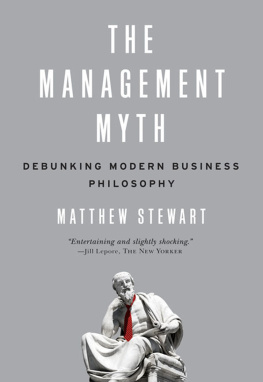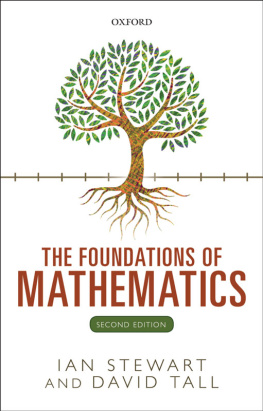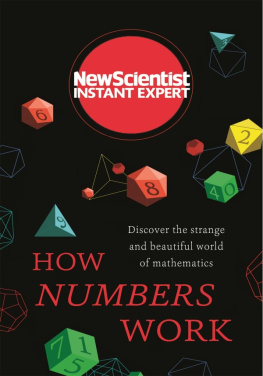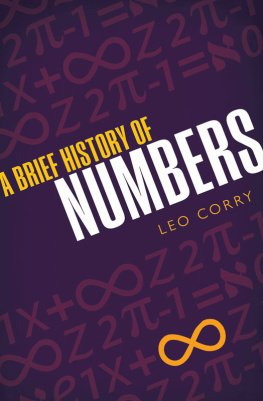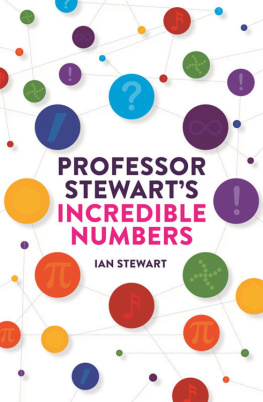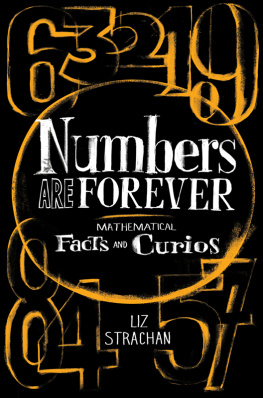

Copyright 2015 by Ian Stewart
Published in the United States in 2015 by Basic Books,
A Member of the Perseus Books Group
All rights reserved. Printed in the United States of America. No part of this book may be reproduced in any manner whatsoever without written permission except in the case of brief quotations embodied in critical articles and reviews. For information, address Basic Books, 250 West 57th Street, New York, NY 10107.
Books published by Basic Books are available at special discounts for bulk purchases in the United States by corporations, institutions, and other organizations. For more information, please contact the Special Markets Department at the Perseus Books Group, 2300 Chestnut Street, Suite 200, Philadelphia, PA 19103, or call (800) 810-4145, ext. 5000, or e-mail .
A CIP catalog record for this book is available from the Library of Congress.
LCCN: 2015931032
ISBN: 978-0-465-04271-5 (e-book)
Published in Great Britain in 2015 by Profile Books
10 9 8 7 6 5 4 3 2 1
Contents
I ve always been fascinated by numbers. My mother taught me to read and to count, long before I first went to school. Apparently, when I did, I came back at the end of day one complaining that we didnt learn anything!. I suspect that my parents had been preparing me for this difficult day by telling me that I would learn all sorts of interesting things, and Id taken the propaganda a little too much to heart. But soon I was learning about planets and dinosaurs and how to make a plaster animal. And more about numbers.
Im still enchanted by numbers, and still learning more about them. Now, Im always quick to point out that mathematics is about many different ideas, not just numbers; for example, its also about shapes, patterns, and probabilitiesbut numbers underpin the entire subject. And every number is a unique individual. A few special numbers stand out above the rest and seem to play a central role in many different areas of mathematics. The most familiar of these is (pi), which we first encounter in connection with circles, but it has a remarkable tendency to pop up in problems that seem not to involve circles at all.
Most numbers cannot aspire to such heights of importance, but you can usually find some unusual feature of even the humblest number. In The Hitchhikers Guide to the Galaxy, the number 42 was the answer to the great question of life, the universe, and everything. Douglas Adams said he chose that number because a quick survey of his friends suggested it was totally boring. Actually, its not, as the final chapter demonstrates.
The book is organised in terms of the numbers themselves, although not always in numerical order. As well as it makes flat statements unsupported by any evidence: all will be revealed as you read on.
The structure is straightforward: each chapter focuses on an interesting number and explains why its interesting. For instance, 2 is interesting because the odd/even distinction shows up all over mathematics and science; 43,252,003,274,489,856,000 is interesting because its the number of ways to rearrange a Rubik cube.
Since 42 is included, it must be interesting. Well, a bit, anyway.
At this point I must mention Arlo Guthries Alices Restaurant Massacree, a musical shaggy dog story that relates in great and repetitious detail events involving the dumping of garbage. Ten minutes into the song, Guthrie stops and says: But thats not what I came here to talk to you about. Eventually you find out that actually it is what he came to talk about, but that garbage is only part of a greater story. Time for my Arlo Guthrie moment: this isnt really a book about numbers.
The numbers are the entry point, a route through which we can dive into the amazing mathematics associated with them. Every number is special. When you come to appreciate them as individuals, theyre like old friends. Each has its own story to tell. Often that story leads to lots of other numbers, but what really matters is the mathematics that links them. The numbers are the characters in a drama, and the most important thing is the drama itself. But you cant have a drama without characters.
To avoid getting too disorganised, Ive divided the book into sections according to the kind of number: small whole numbers, fractions, real numbers, complex numbers, infinity... With a few unavoidable exceptions, the material is developed in logical order, so that earlier chapters lay the groundwork for later ones, even when the topic changes completely. This requirement influences how the numbers are arranged, and it requires a few compromises. The most significant involves complex numbers. They appear very early, because I need them to discuss some features of more familiar numbers. Similarly, an advanced topic occasionally crops up somewhere because thats the only sensible place to mention it. If you meet one of these passages and find it hard going, skip it and move on. You can come back to it later.
This book is a companion volume to my iPad app Incredible Numbers. You dont need the app to read the book, and you dont need the book to use the app. In fact, the overlap between them is quite small. Each complements the other, because each medium can do things that the other cant.
Numbers truly are incrediblenot in the sense that you dont believe anything you hear about them, but in the positive sense: they have a definite wow factor. And you can experience it without doing any sums. You can see how numbers evolved historically, appreciate the beauty of their patterns, find out how they are used, marvel at the surprises: I never knew 56 was so fascinating! But it is. It really is.
So are all the others. Including 42.
1, 2, 3, 4, 5, 6, 7,... What could be simpler than that? Yet it is numbers, perhaps more than anything else, that have enabled humanity to drag itself out of the mud and aim at the stars.
Individual numbers have their own characteristic features, and lead to a variety of areas of mathematics. Before examining them one by one, however, its worth a quick look at three big questions. How did numbers originate? How did the number concept develop? And what are numbers?
The Origin of Numbers
About 35,000 years ago, in the Upper Palaeolithic, an unknown human carved 29 marks in the fibula (calf bone) of a baboon. It was found in a cave in the Lebombo Mountains of Swaziland, and is called the Lebombo bone. It is thought to be a tally stick: something that records numbers as a series of notches: |, ||, |||, and so on. There are 295 days in a lunar month, so it could be a primitive lunar calendaror a record of the female menstrual cycle. Or a random collection of cut-marks, for that matter. A bone doodle.
The wolf bone, another tally stick with 55 marks, was found in Czechoslovakia in 1937 by Karl Absolon. It is about 30,000 years old.
In 1960 the Belgian geologist Jean de Heinzelin de Braucourt discovered a notched baboon fibula among the remains of a tiny fishing community that had been buried by an erupting volcano. The location was what is now Ishango, on the border between Uganda and Congo. The bone has been dated to about 20,000 years ago.
The simplest interpretation of the Ishango bone is again a tally stick. Some anthropologists go further and detect elements of arithmetical structure, such as multiplication, division, and prime numbers; some think it is a six-month lunar calendar; some are convinced that the marks were made to provide a good grip on a bone tool, and have no mathematical significance.
Next page






